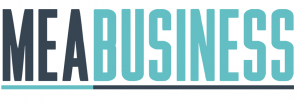Human Capital Management (HCM) is a comprehensive suite of HR processes and workflows that is gaining interest amongst HR professionals and Business Leaders, and its adoption is accelerating faster to effectively manage the modern-day distributed and hybrid workforce – this phenomenon is here to stay and is considered to be the new norm.
An enterprise-grade digital platform transparently unifies Engagement, Collaboration, and Productivity among stakeholders in matrix organizations and temporary contractors. Despite facing significant challenges owing to ineffective and discrete systems with a lack of flexibility and adaptation, many organisation delay converting their legacy processes and systems due to perceived complexity, confidentiality, cost, and a reluctance to change.
While many organisation are progressing on their digital transformation journey, focusing on Production, Sales, Supply Chain, and Finance processes, but HR departments are often delayed or left out, missing out on AI capabilities in people management. Modernizing internal procedures will not only increase overall efficiency, but will also leverage the power of modern solutions’ predictive analytic (AI) capabilities to make the best use of an organization’s most valuable asset, its employees.
AI-enabled systems can evaluate the entire employee management lifecycle, perform more accurate, unbiased analysis based on pattern recognition, and handle big quantities more efficiently. An integrated chatbot will also enable seamless interaction, leading the better engagement with employees. The AI engine sheds light on hidden patterns, ideal decisions, and employee behaviours across the employment lifecycle and drives the necessary action at the appropriate time. In addition, the application of Machine Learning (ML) will facilitate the management of continuous improvement initiatives by identifying process gaps/inefficiencies and providing optimal management models.
With the right HCM system, departmental managers are able to track the direct and indirect costs of the resources providing services, as well as a consolidated view of past and anticipated future expenses. In addition to optimizing talent acquisition, onboarding, and staff orientation, these tools help publish employee-specific information through a secure self-service portal and real-time reporting. Mobile apps allow employees to receive permissions instantly without engaging with HR personnel, even when their manager is absent. These will significantly improve their experience and staff satisfaction overall.
So, we’ve a Win-Win situation.
SaaS-based HCM solutions can fast-track deployments and data migration and reduce hardware costs with a “Pay-As-You-Go” approach. For clients who prefers to own and administer the system internally, the HCM solution is also offered in an on-premises model. In addition, these systems are highly scalable and customisable to meet specific business needs. They are compatible with authentication/security, ERP, and CRM systems.




























